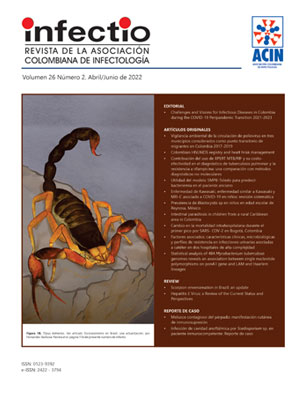Hepatitis E Virus: A review of the current status and perspectives
Contenido principal del artículo
Resumen
Hepatitis E virus produces approximately 20-million infections per year; symptomatic cases are over 3-million and deaths are approximately 60,000. Generally, it is self-limited; however, it can cause up to 30% mortality in pregnant women and can be chronic in immunosuppressed people. The transmission path of the Hepatitis E virus is principally fecal-oral, especially in developing countries; in industrialized countries, it is transmitted as a zoonosis, through organ transplants or blood transfusions. The vaccine developed is only licensed in China. Currently, no treatment is available for the HEV infection and work is underway in identifying the viral cycle and the immune response. This article sought to offer a review of the theme on the hepatitis E virus, from the last six years, to describe current general aspects of the Hepatitis E virus, genome, ways of transmission and contribute to its visibility for its prevention and control.

